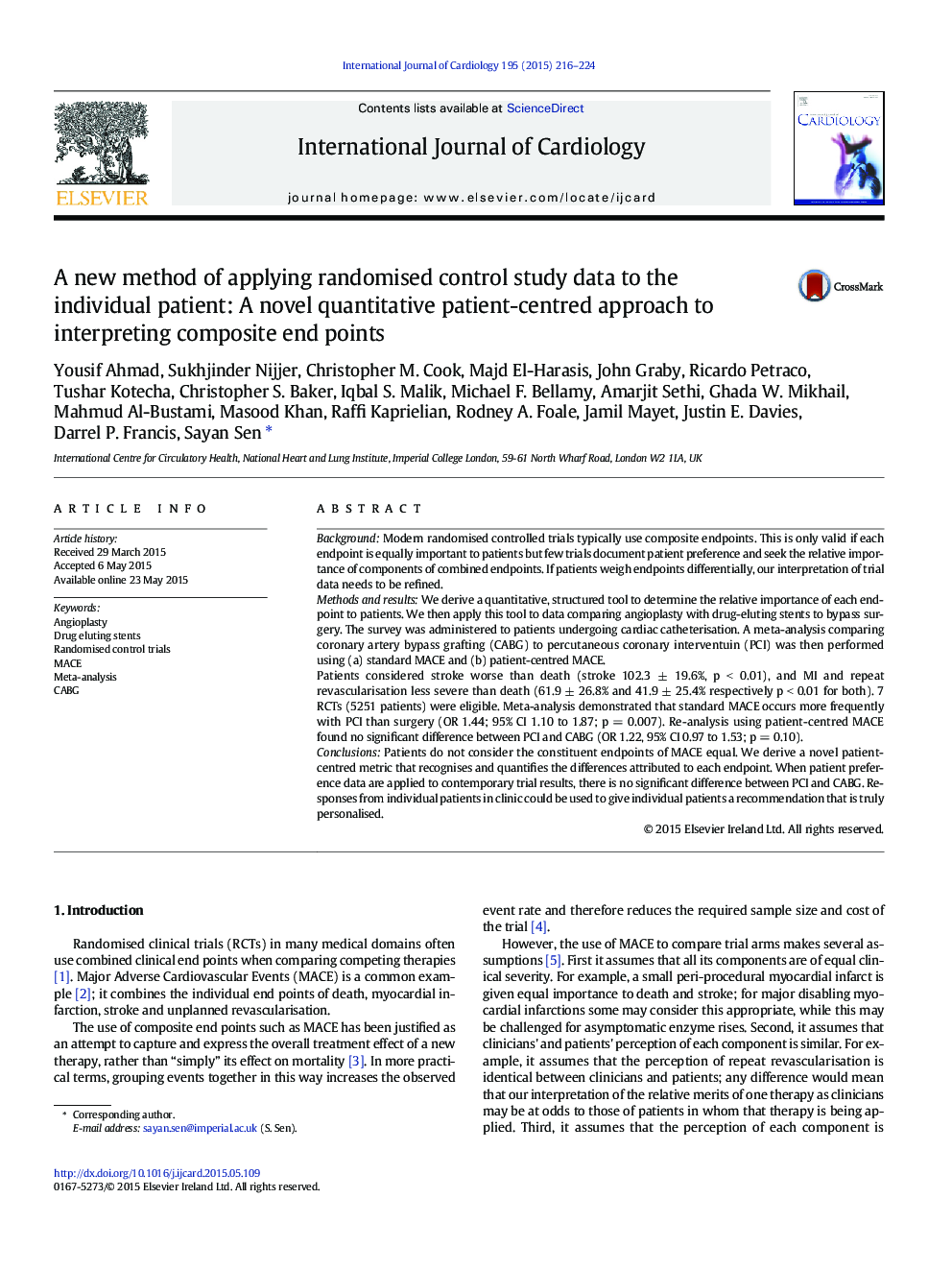| کد مقاله | کد نشریه | سال انتشار | مقاله انگلیسی | نسخه تمام متن |
|---|---|---|---|---|
| 5966133 | 1576157 | 2015 | 9 صفحه PDF | دانلود رایگان |
BackgroundModern randomised controlled trials typically use composite endpoints. This is only valid if each endpoint is equally important to patients but few trials document patient preference and seek the relative importance of components of combined endpoints. If patients weigh endpoints differentially, our interpretation of trial data needs to be refined.Methods and resultsWe derive a quantitative, structured tool to determine the relative importance of each endpoint to patients. We then apply this tool to data comparing angioplasty with drug-eluting stents to bypass surgery. The survey was administered to patients undergoing cardiac catheterisation. A meta-analysis comparing coronary artery bypass grafting (CABG) to percutaneous coronary interventuin (PCI) was then performed using (a) standard MACE and (b) patient-centred MACE.Patients considered stroke worse than death (stroke 102.3 ± 19.6%, p < 0.01), and MI and repeat revascularisation less severe than death (61.9 ± 26.8% and 41.9 ± 25.4% respectively p < 0.01 for both). 7 RCTs (5251 patients) were eligible. Meta-analysis demonstrated that standard MACE occurs more frequently with PCI than surgery (OR 1.44; 95% CI 1.10 to 1.87; p = 0.007). Re-analysis using patient-centred MACE found no significant difference between PCI and CABG (OR 1.22, 95% CI 0.97 to 1.53; p = 0.10).ConclusionsPatients do not consider the constituent endpoints of MACE equal. We derive a novel patient-centred metric that recognises and quantifies the differences attributed to each endpoint. When patient preference data are applied to contemporary trial results, there is no significant difference between PCI and CABG. Responses from individual patients in clinic could be used to give individual patients a recommendation that is truly personalised.
Journal: International Journal of Cardiology - Volume 195, 15 September 2015, Pages 216-224
